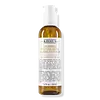What's inside
What's inside
 Key Ingredients
Key Ingredients

No key ingredients
 Benefits
Benefits

 Concerns
Concerns

 Ingredients Side-by-side
Ingredients Side-by-side

Water
Skin ConditioningSodium Cocoyl Glycinate
CleansingCoco-Betaine
CleansingGlycerin
HumectantAcrylates Copolymer
Sodium Chloride
MaskingPhenoxyethanol
PreservativeCitrus Limon Peel Oil
MaskingLimonene
PerfumingSodium Hydroxide
BufferingTetrasodium EDTA
Propylene Glycol
HumectantGeranium Maculatum Oil
MaskingCitral
PerfumingCalendula Officinalis Flower Extract
MaskingCymbopogon Schoenanthus Oil
MaskingArtemisia Absinthium Extract
Skin ConditioningCitric Acid
BufferingWater, Sodium Cocoyl Glycinate, Coco-Betaine, Glycerin, Acrylates Copolymer, Sodium Chloride, Phenoxyethanol, Citrus Limon Peel Oil, Limonene, Sodium Hydroxide, Tetrasodium EDTA, Propylene Glycol, Geranium Maculatum Oil, Citral, Calendula Officinalis Flower Extract, Cymbopogon Schoenanthus Oil, Artemisia Absinthium Extract, Citric Acid
Water
Skin ConditioningGlycerin
HumectantMyristic Acid
CleansingPalmitic Acid
EmollientStearic Acid
CleansingPotassium Hydroxide
BufferingLauric Acid
CleansingGlyceryl Distearate
EmollientGlyceryl Stearate
EmollientKaolin
AbrasivePhenoxyethanol
PreservativeCaprylyl Glycol
EmollientTetrasodium EDTA
Citrus Limon Fruit Extract
MaskingPEG-14m
Emulsion StabilisingPseudoalteromonas Ferment Extract
HumectantSalicylic Acid
MaskingSodium Hydroxide
Buffering
 Reviews
Reviews

Ingredients Explained
These ingredients are found in both products.
Ingredients higher up in an ingredient list are typically present in a larger amount.
Glycerin is already naturally found in your skin. It helps moisturize and protect your skin.
A study from 2016 found glycerin to be more effective as a humectant than AHAs and hyaluronic acid.
As a humectant, it helps the skin stay hydrated by pulling moisture to your skin. The low molecular weight of glycerin allows it to pull moisture into the deeper layers of your skin.
Hydrated skin improves your skin barrier; Your skin barrier helps protect against irritants and bacteria.
Glycerin has also been found to have antimicrobial and antiviral properties. Due to these properties, glycerin is often used in wound and burn treatments.
In cosmetics, glycerin is usually derived from plants such as soybean or palm. However, it can also be sourced from animals, such as tallow or animal fat.
This ingredient is organic, colorless, odorless, and non-toxic.
Glycerin is the name for this ingredient in American English. British English uses Glycerol/Glycerine.
Learn more about GlycerinPhenoxyethanol is a preservative that has germicide, antimicrobial, and aromatic properties. Studies show that phenoxyethanol can prevent microbial growth. By itself, it has a scent that is similar to that of a rose.
It's often used in formulations along with Caprylyl Glycol to preserve the shelf life of products.
Sodium Hydroxide is also known as lye or caustic soda. It is used to adjust the pH of products; many ingredients require a specific pH to be effective.
In small amounts, sodium hydroxide is considered safe to use. However, large amounts may cause chemical burns due to its high alkaline.
Your skin has a natural pH and acid mantle. This acid mantle helps prevent harmful bacteria from breaking through. The acid mantle also helps keep your skin hydrated.
"Alkaline" refers to a high pH level. A low pH level would be considered acidic.
Learn more about Sodium HydroxideTetrasodium EDTA is the salt formed from neutralizing ethylenediamine tetraacetic acid with sodium hydroxide. It is a chelating agent and used to prevent metal ions from binding to other ingredients. This helps keep the product and ingredients stable.
Tetrasodium EDTA comes as a white solid and is soluble in water.
Water. It's the most common cosmetic ingredient of all. You'll usually see it at the top of ingredient lists, meaning that it makes up the largest part of the product.
So why is it so popular? Water most often acts as a solvent - this means that it helps dissolve other ingredients into the formulation.
You'll also recognize water as that liquid we all need to stay alive. If you see this, drink a glass of water. Stay hydrated!
Learn more about Water